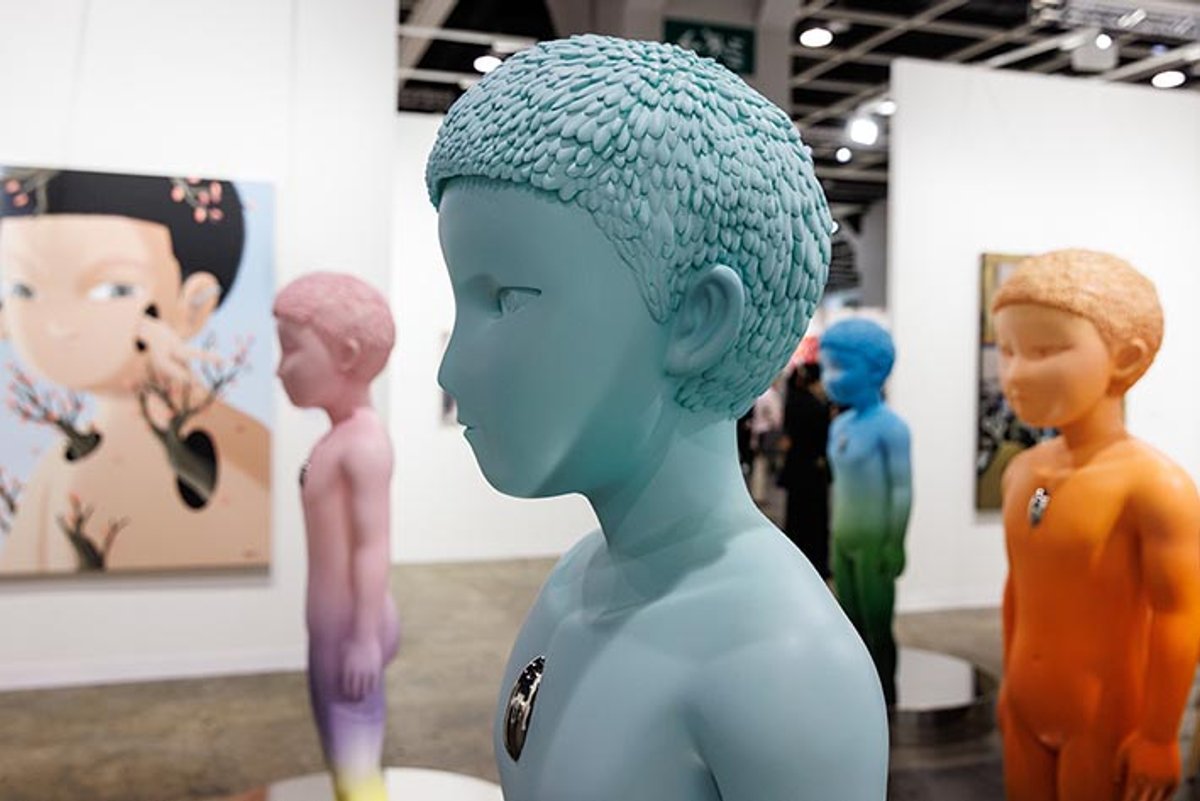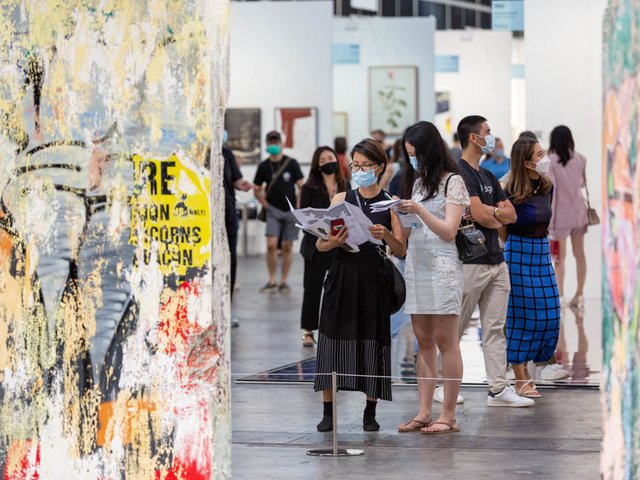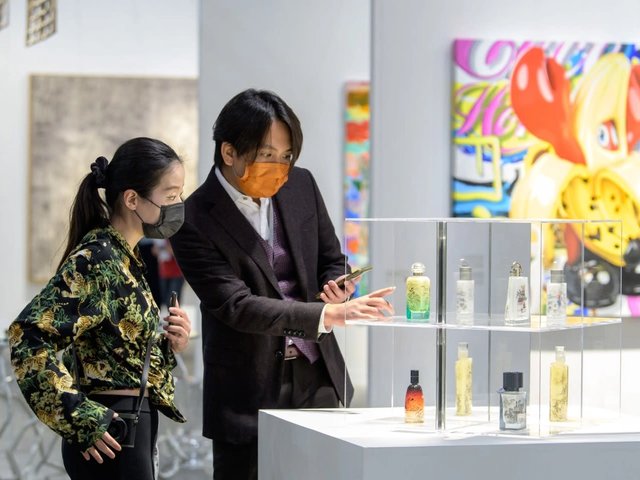The anticipation in the room was palpable as Noah Horowitz, the new global director of Art Basel Hong Kong, welcomed international journalists and VIPs yesterday to the fair, ushering in the first edition to be held at the Convention Centre since China and Hong Kong lifted all Covid-19 lockdown restrictions.
The statistics are fairly healthy at this year’s edition: 177 galleries are taking part, a leap up from the 130 exhibitors in 2022 with 22 newcomer galleries including Gallery Vacancy from Shanghai and Whistle from Seoul. Still, this number is considerably lower than the 242 exhibitor peak reached by the fair's 2019 edition, the last to have taken place before the pandemic.
Despite the clear headwinds facing the city, Horowitz highlighted how the gallery scene has remained “vibrant” in Hong Kong and crucially that all three auction houses are “doubling down” on their commitment to the city (earlier this week Phillips launched its lavish new Asia headquarters in the West Kowloon Cultural District).
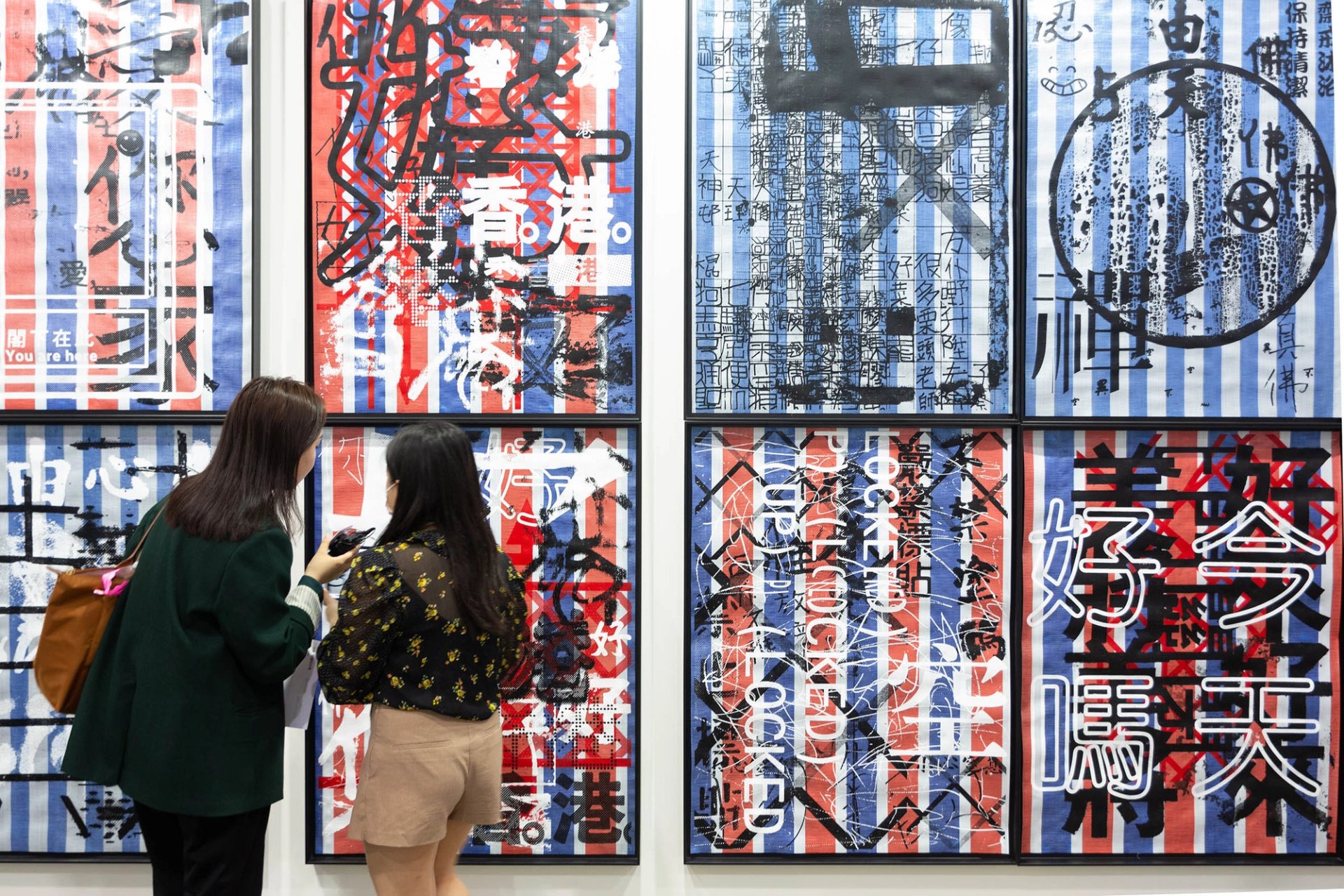
Stanley Wong at Lucie Chang Fine Arts's booth
Courtesy Art Basel
Horowitz’s speech to the press audience—clearly pleased to be back in a city that imposed some of the most draconian pandemic measures in the world—highlighted a key point, namely that Hong Kong remained “a gateway to the Asian market”.
This seemed to be borne out in the very high volume of visitors at the preview and the presence of dealers such as Sadie Coles, Jay Jopling (White Cube) and David Zwirner who turned up in person. “It is important that they’re visible and on the fair floor in the wake of staff hired remotely to man the stands in the past few years,” said an anonymous Hong Kong commentator.
High-profile figures such as Maria Balshaw, the director of Tate; Amy Cappellazzo of the Art Intelligence Global art advisory and the Bangladeshi collecting couple, Rajeeb and Nadia Samdani, along with the NFT artist Beeple, were also in attendance.
The obligatory press released sales reports began trickling in almost immediately, reflecting the buying power of Asian collectors especially with a slew of purchases to private collectors and institutions in the region including Elizabeth Peyton’s Truffaut (2005), which sold for $2.2m at David Zwirner gallery to an “important Asian museum”.
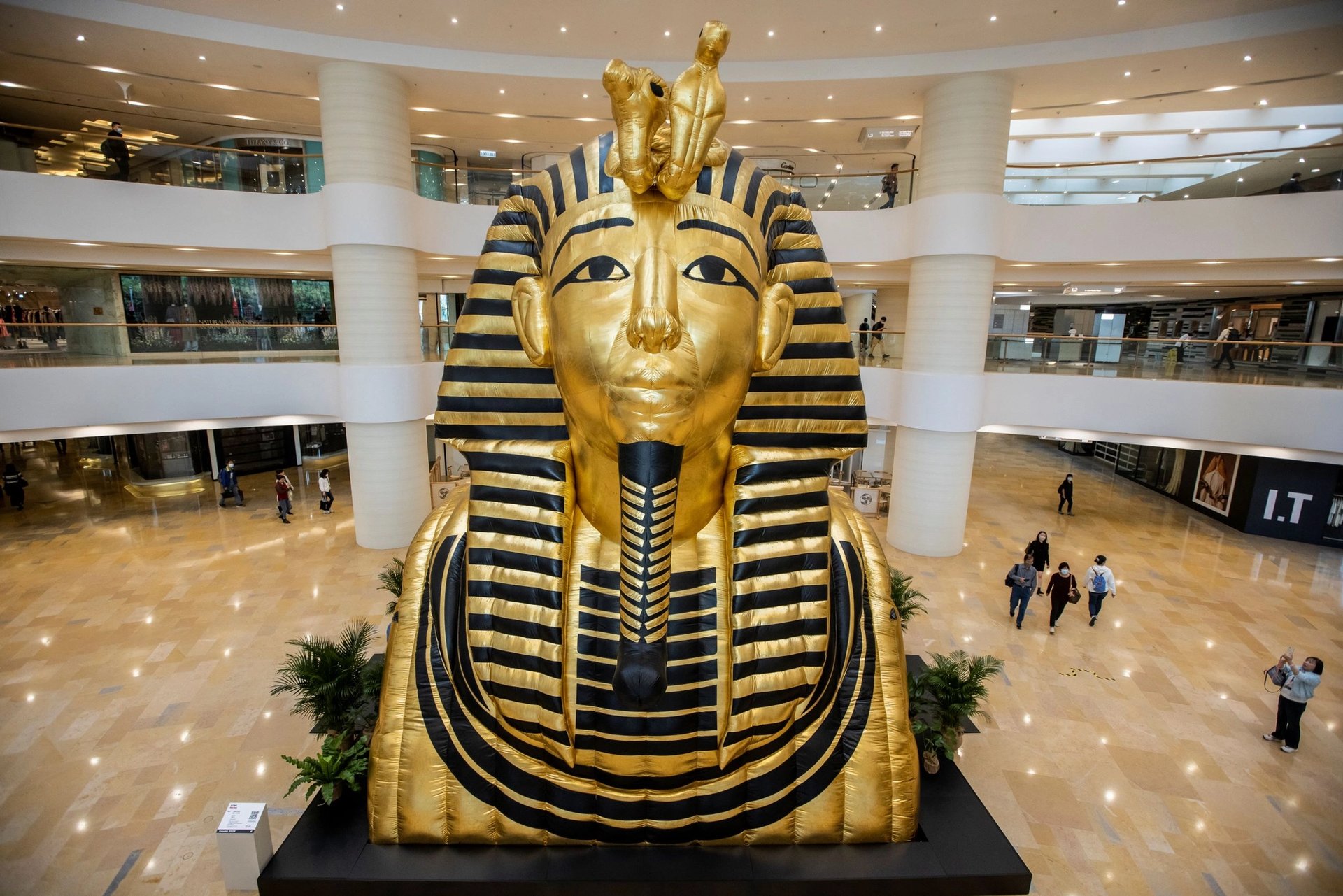
Awol Erizku's Gravity (2018-23)—a giant inflatable sculpture of Tutankhamun for the Encounters section of Art Basel Hong Kong.
Courtesy Art Basel, Photo: Isaac Lawrence
Hauser & Wirth sold Angel Otero’s On Being Blue (2023) for $225,000 to the Long Museum in Shanghai while The Wine Dark Sea (2022-23) by the Ukrainian artist Stanislava Pinchuk in the Encounters public art section was bought by the HE Art Museum in Shunde, Guangdong province, for $240,000 (Yavuz Gallery).
Thaddaeus Ropac gallery, one of 42 dealers to return after a Covid hiatus, also reported a number of sales to Asian buyers including Martha Jungwirth’s painting Ohne Titel, 2022 (€350,000) and Miquel Barceló’s À partir de zero, 2021 (€220,000).
“I prefer it when the works stay here, rather than being bought and shipped all the way back, and like it when fairs become slightly more regional,” said Ropac. “There is no way Singapore can replace Hong Kong while Seoul is more creative [referring to the Korean wave in music as well as art]. Hong Kong is a market hub.”
Leo Xu, a senior director at Zwirner gallery, said that visiting collectors are “predominantly Asian” adding that the “quality of collectors from mainland China, who have not been able to travel for three years, is outstanding”.
The fair’s owners, the MCH group, have cannily pivoted towards their Asian neighbours, partnering with other events and projects in Asia in a bid to consolidate Art Basel Hong Kong’s status as a bridging market hub (of this year’s participating galleries, two thirds have spaces in Asia). Last year MCH made a 15% investment in Singapore’s new international art fair, Art SG, and also backed Art Week Tokyo whereby 350 VIPs hopped between more than 50 galleries last November.
“The latest moves into alternative projects by Art Basel and its owner MCH Group seem part of a broader strategy of diversification, accelerated since Lupa System— James Murdoch’s investment company became an anchor shareholder of MCH Group in late 2020,” writes Melanie Gerlis, The Art Newspaper’s art market editor-at-large in the Financial Times.

The Japanese gallery Kosaku Kanechika's booth at Art Basel Hong Kong with work on display by Takuro Kuwata
Courtesy Art Basel
This nurturing of pan-Asian partnerships seems to be paying off. “There are so many Japanese collectors here, especially younger ones,” said Taka Ishii of the eponymous Tokyo-based gallery (there are 28 exhibitors from Japan this year, up from 19 in 2022). He sold meanwhile a sculpture by Goro Kakei (Blow, 1987) for $28,000 to a US collector.
Closer to home, dealers from mainland China were particularly gratified to be back on the fair floor. Yang Shuqing from the Beijing-based gallery White Space said that it was straightforward to get a visa. “It is important to be here to meet people. We’re confident that Art Basel Hong Kong will bring a new energy again to the art scene here,” she said. Within the first hour, the gallery had sold a multi-panel oil and pencil piece by He Xiangyu for $160,000 (Lizard and Cigarette, 2022) to a Chinese collector.
But against the backdrop of the parties and solid sales, the city has changed. The national security law, implemented mid-2020 by the Chinese government, criminalises any act of subversion, secession or terrorism, with key provisions designed to curtail protest and freedom of speech such as holding some trials behind closed doors. “This is not the Hong Kong of 2018,” said a Chinese journalist who preferred to remain anonymous.
Angelle Siyang-Le, the fair’s new director, tells The Art Newspaper: “The way we operate art business has not been impacted so far [by the law]. We’re trying to monitor the situation constantly. The market is still developing and we’re confident that we’ll be able to conduct our shows as before.”
In the politically charged post-pandemic climate, new museums, such as M+ and the Hong Kong Palace Museum, are a cultural balm and major draw (M+ is a key element in the metamorphosis of Hong Kong into a culture destination, bringing a transformational ‘Tate Modern moment” to the metropolis).
Crucially the Swiss collector Uli Sigg, whose 1,500-strong Chinese contemporary art collection is on show at M+ museum, endorsed Hong Kong’s place in the global market hierarchy, saying: “I am convinced the others [fairs in the region] cannot provide the depth [regarding] the art on offer and the ecosystem, at least not for the foreseeable future.” On the collector front, Lu Jingjing of Beijing Commune gallery said that she has been inundated with requests for VIP passes. “It really is good to be back,” she said.


